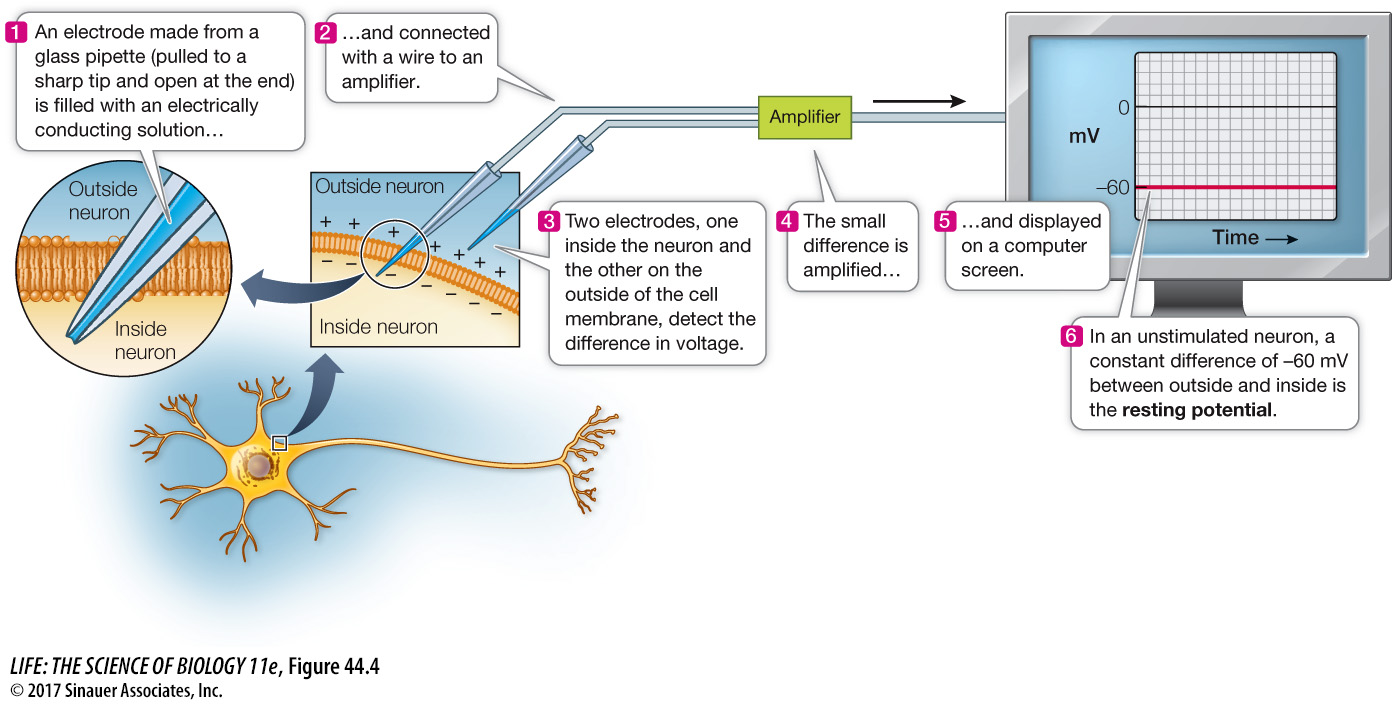Activities of neurons are recorded as changes in membrane potential
We record electrical events in a cell using electrodes. Figure 44.4 shows how this technique is applied across the cell membrane of a neuron to measure the resting potential, which is usually between –60 and –70 millivolts (mV). The minus sign indicates that the inside of the cell is electrically negative compared with the outside.
research tools
Figure 44.4 Measuring the Membrane Potential An electrode can be made from a glass pipette with a very sharp tip filled with a solution that conducts electric charges. If one electrode is placed inside the neuron and another one on the outside of the cell membrane, the difference in voltage across the cell membrane can be measured.

As explained above, the resting potential is largely due to a balance between the tendency of K+ ions to diffuse down their concentration gradient and the electrical potential that holds them back. This resting potential provides a means for a neuron to respond to stimuli. If some determinant of this balance of forces is altered, the membrane potential will change. The concentration gradient of the different ions inside and outside of the neuron may not change, but if the permeability of the membrane to ions changes, the membrane potential will change. Therefore, any chemical or physical stimulus that changes the permeability of the cell membrane to ions will cause a change in the cell’s membrane potential. For example, what would happen to the cell membrane potential if there was a sudden increase in the permeability of the membrane to Na+ ions. Na+ ions are more abundant outside the cell than inside. Also, the inside of the resting cell is negatively charged which attracts the positively charged N+ ions. Thus, a sudden large increase in permeability of the membrane to Na+ would cause a change of the membrane potential in the positive direction. If the change in Na+ permeability were transient, the membrane potential would rapidly return to its resting, negative value. Such a rapid change in membrane potential is an AP.
Animation 44.1 The Resting Membrane Potential